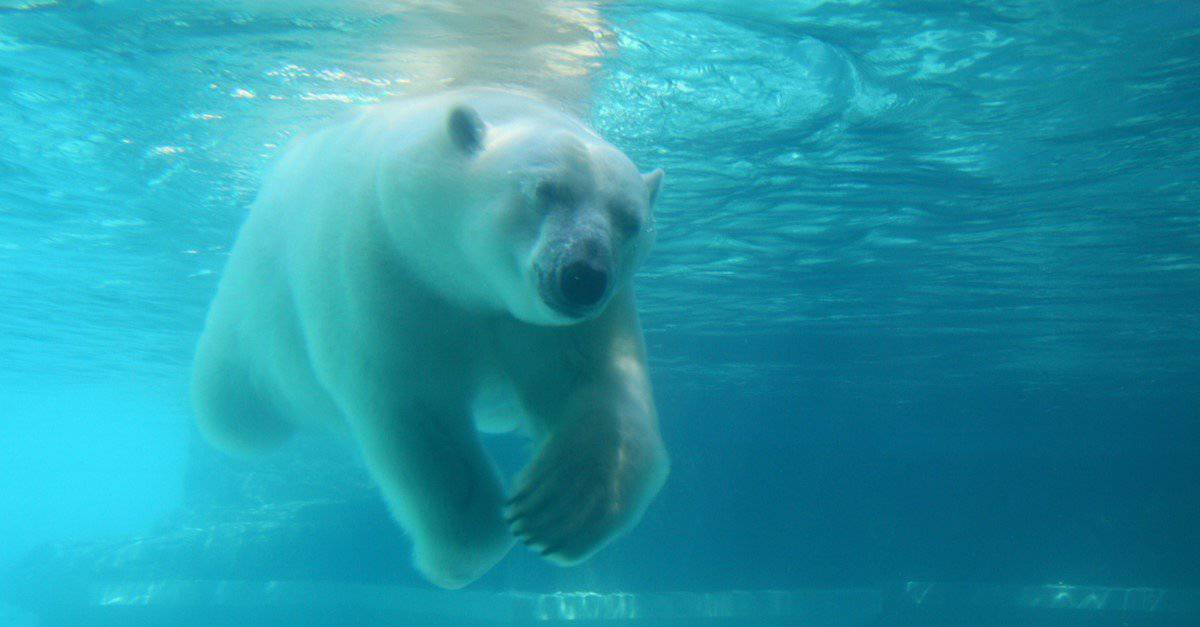Classification and Scientific Name
The polar bear, scientifically named Ursus maritimus (“maritime bear”), was first described by Constantine John Phipps in 1774. Among the Inuit, it’s known as Nanook, while in Norway, it goes by isbjørn (“ice bear”) or kvitbjørn (“white bear”).
Originally, polar bears were thought to be a completely separate species, but recent studies have shown that they actually share a close relationship with brown bears. Today, Ursus maritimus is the widely accepted scientific name.
Polar bears are massive animals that roam the icy expanses of the Arctic Ocean. They are the largest species of bear in the world—only the giant Kodiak brown bears of Alaska rival them in size. Adult males can weigh up to 1,300 pounds. Their name, meaning “sea bear,” is fitting: not only do they spend much of their time near the coast, but they’re also powerful swimmers, spotted as far as 100 miles from land or ice. Sadly, polar bears are among the animals hardest hit by climate change, as the melting ice they depend on disappears at an alarming rate. Hunting, pollution, and oil and gas exploration have further reduced their numbers, leading to their classification as a threatened species.
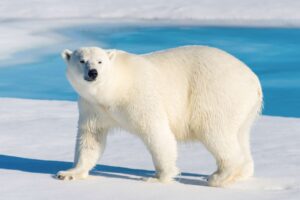
Evolution
Polar bears are part of the Ursidae family, which has been evolving for millions of years. The oldest known polar bear fossil—a jawbone discovered on Prince Charles Foreland in 2004—dates back 110,000 to 130,000 years. This find suggests that polar bears branched off from a population of brown bears during the Pleistocene era, when much of Siberia was under glaciers. Over time, adaptations like changes in their molar teeth set them apart from their brown bear ancestors.
Genetic studies indicate that polar bears diverged from brown bears around 150,000 years ago. Interestingly, some brown bear mitochondrial DNA (mtDNA), like that of the now-extinct Irish brown bear, is genetically closer to polar bears than to other brown bears. Nuclear DNA studies suggest an even earlier divergence—around 400,000 to 600,000 years ago.
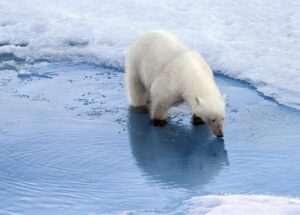
Throughout history, polar bears and brown bears have occasionally interbred, usually during warmer periods when polar bears were forced onto land. Most brown bears carry about 2% polar bear DNA, but the ABC Islands brown bears in Alaska have up to 10%, indicating more frequent interbreeding. Despite their genetic closeness, polar bears and brown bears are still considered distinct species.
Anatomy and Appearance
Adult polar bears typically grow over six feet long and weigh around half a ton, with males often nearly twice as heavy as females. These incredible animals are superbly adapted to life on the ice. Their dense fur consists of a warm undercoat and longer, hollow guard hairs that trap and channel sunlight down to their black skin, maximizing heat absorption.
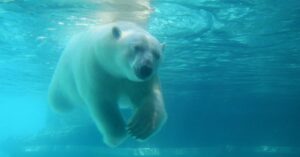
Polar bears have strong, muscular bodies, large front paws ideal for swimming, and furry soles for insulation and grip on ice. Their longer necks and smaller ears set them apart from other bears and help them stay streamlined while swimming.
The largest polar bear ever recorded weighed a staggering 2,209 pounds (1,002 kg) and stood more than 11 feet tall on its hind legs! Despite their size, when polar bears and grizzlies meet, it’s often the grizzly that stands its ground while the polar bear retreats.
Distribution and Habitat
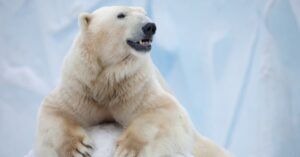
Polar bears are found along the icy coasts surrounding the North Pole, ranging as far south as Hudson Bay. About 60% live in northern Canada, with the rest spread across Greenland, Alaska, Russia, and Norway’s Svalbard archipelago. They stick close to sea ice, covering vast distances in search of food.
Their habitat is under severe threat. Although they’re used to seasonal ice melt, global warming is causing the ice to recede earlier each year, shrinking their hunting grounds. Human activities like hunting, settlement expansion, and pollution further jeopardize their survival.
Behavior and Lifestyle
Polar bears are mostly solitary and are built for speed and endurance—able to run up to 25 mph on land and swim at about 6 mph. They can swim long distances across open ocean, diving to hunt prey while holding their breath for up to two minutes.
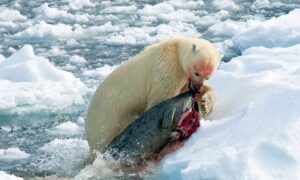
On land, they use two main hunting methods: stalking prey or waiting patiently by breathing holes to ambush seals. Seals are essential to their survival, providing high-energy blubber. When the ice melts during summer, polar bears are forced inland, where they have to adapt their diets.
Reproduction and Life Cycles
Polar bears mate between April and May. After a period of delayed implantation, females give birth about nine months later to between one and four cubs, typically inside snow dens they dig in late autumn. Newborn cubs are tiny—just over a pound—blind, and hairless.
Cubs stay with their mother for two to three years, during which they learn survival skills through playful wrestling and mock fighting. These activities help young bears prepare for life on their own.
Diet and Prey
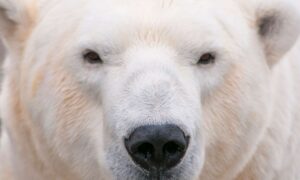
As the largest carnivorous land mammal, the polar bear’s diet is dominated by seals, especially the ringed seal. They often eat only the blubber, leaving the rest for scavengers like Arctic foxes. When seals are scarce, polar bears also eat birds, fish, berries, and even reindeer. In times of desperation, they scavenge whale carcasses washed ashore.
Polar bears have a remarkable sense of smell, capable of detecting seal dens or carrion from miles away.
Predators and Threats
Polar bears face little threat from other animals. However, cubs can sometimes fall victim to adult males. By far, the biggest threat to polar bears is humans—through hunting, habitat destruction, and climate change. With their slow reproductive rates, polar bears are struggling to maintain their populations. Some experts warn they could vanish from the wild within the next 30 years.
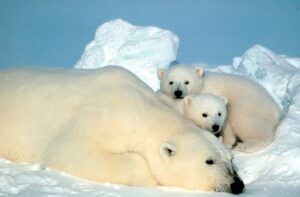
Interesting Facts and Features
Female polar bears hibernate through the harsh Arctic winter, giving birth in cozy dens that can be up to 40 degrees warmer than the outside air. Males, however, remain active year-round.
Their 4-inch-thick blubber layer provides crucial insulation, but it also means they must move slowly to avoid overheating. Polar bears look their whitest at the beginning of autumn after shedding their old fur, while by spring, their coats can take on a yellowish hue, partly due to oils from their prey.
Relationship with Humans
Until the 1600s, knowledge of polar bears was limited to native Arctic peoples. When European, Russian, and American hunters arrived, polar bears were heavily hunted until the 1970s when international protections were introduced. Today, indigenous communities are allowed limited traditional hunting, but the greatest threat remains global warming. Some scientists predict Hudson Bay might have no summer ice at all by 2080.
While polar bears generally avoid humans, attacks do occur, as seen in a famous 2011 incident in Svalbard where a group of campers was attacked.
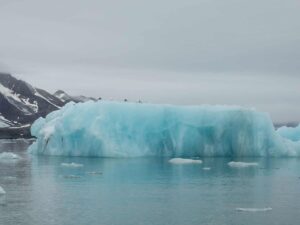
Conservation Status and Life Today
Polar bears are currently listed as “Vulnerable” on the IUCN Red List. Despite hunting bans, conservation efforts are challenging as Arctic ice continues to vanish. Industrial development further degrades their fragile habitat.
Today, between 20,000 and 25,000 polar bears are thought to roam the Arctic, most of them in northern Canada.
Types of Polar Bears
There’s only one species of polar bear, Ursus maritimus. However, they are part of a larger family of eight bear species worldwide: American black bear, Asiatic black bear, brown bear, polar bear, sloth bear, sun bear, spectacled bear, and giant panda.
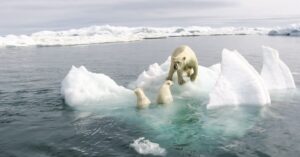
Bears are generally characterized by stocky bodies, short legs, long snouts, small rounded ears, thick fur, and powerful claws—all features that help them thrive in various environments, from icy tundras to dense forests.
